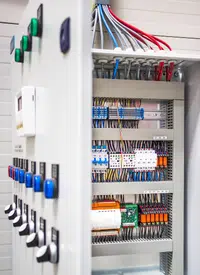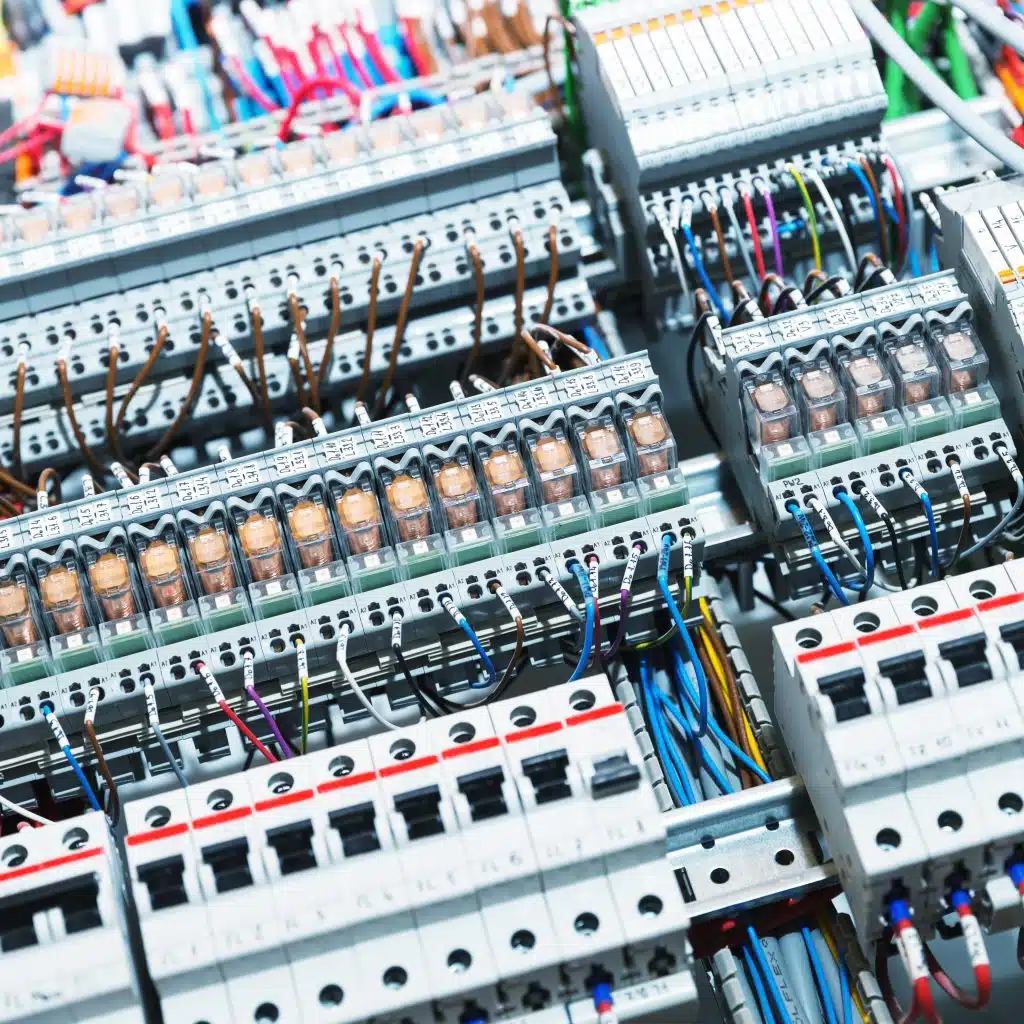

Electrical fires are one of the top causes of fires in industrial settings. In fact, the National Fire Protection Association (NFPA) found that fires caused by electrical distribution and lighting equipment accounted for 55% of direct property damage, as well as 9% of civilian injuries from 2011 to 2015. Electrical failure or malfunction caused $25 million dollars of direct property damage in the same time span.When a Class C fire occurs, it’s important to know which fire extinguisher or suppression system is appropriate. How do electrical fires start? How do you fight an electrical fire? Let’s dive into the answers.

Fire is categorized into five different types: A, B, C, D, and K. Each type of fire feeds on a specific fuel source and is dealt with using a specific type of fire extinguisher or fire suppression system. For example, Class A fires are the most common type of fire and come from materials like wood, paper, fabric, rubber, and plastic. Water and foam extinguishers are most often used to fight Class A fires. However, Class C fires are electrical fires and a specific fire suppression system is needed.
Class C fires use live electrical currents or electrical equipment as a source of fuel. A Class C fire can involve electrical tools, wiring, or appliances, and often occur in industrial settings. Keep in mind that Class C fires cannot be fought with water— using water as an extinguishing agent can actually make Class C fires worse! The most effective way to put out a Class C fire is to isolate the source of electricity and use a Class C fire extinguisher.
A Class C fire can start from a variety of ignition sources, like:

However, there are some places where Class C fires are more common. A Class C fire can start in an electrical cabinet. Control cabinets and relay panels have many electrical connections and ignition points. Faulty wiring or short circuits can cause an electrical panel to ignite and spread unless action is taken. The result can be devastating, causing injury to workers, damaged equipment, and lengthy (and costly) downtime.
Despite the fact that electrical panels have many potential ignition points, fire protection for electrical cabinets is not always a regulatory requirement.
As OSTİM Defense and Aerospace Cluster (OSSA), we held a cooperation meeting with the Ministry of National Defense General Directorate of Technical Services. The opening remarks were delivered by OSSA Chairman of the Board, Mr. İbrahim Yarsan; ASFAT General Manager, Prof. Dr. Mustafa İlbaş; and Major General Ercan Eroğlu, General Director of Technical Services at the Ministry of National Defense. Following the opening session, experts from the Ministry of National Defense delivered informative presentations on “Introduction to MoD Military Factories” and “MoD Facility Security Clearance / Production Permit Certificate Processes.” As Nero Industry, we had the opportunity to present our products and capabilities to the MoD delegation and engage in bilateral cooperation meetings throughout the program.
*Yasal Uyarı ve Fikri Mülkiyet Beyanı:
Bu web sitesinin tamamı, metin içerikleri, grafikler, logolar, görseller, fotoğraflar, çizimler, teknik ve bilimsel çizimler, ses ve video klipleri, animasyonlar, görsel-işitsel kayıtlar, yazılımlar, kaynak kodlar, veritabanları, tasarım unsurları, kullanıcı arayüzü bileşenleri ve diğer tüm teknik ve yaratıcı materyaller ile bunlara ilişkin tüm fikri ve sınai mülkiyet hakları dahil ancak bunlarla sınırlı olmamak üzere NERO Endüstri Savunma San. A.Ş.’nin veya usulüne uygun olarak yetkilendirdiği lisans sahiplerinin münhasır mülkiyetindedir. Söz konusu içerikler; Türkiye Cumhuriyeti mevzuatı, özellikle 5846 sayılı Fikir ve Sanat Eserleri Kanunu, Türk Ticaret Kanunu, Türk Ceza Kanunu ile Türkiye Cumhuriyeti’nin taraf olduğu uluslararası anlaşmalar ve sözleşmeler, başta Fikir ve Sanat Eserlerinin Korunmasına İlişkin Bern Sözleşmesi, Sınai Mülkiyetin Korunmasına Dair Paris Sözleşmesi, TRIPS Anlaşması, WIPO Telif Hakları Anlaşması ve yürürlükte olan veya gelecekte yürürlüğe girecek ilgili Avrupa Birliği Direktifleri ve Tüzükleri kapsamında korunmaktadır. NERO Endüstri Savunma San. A.Ş.’nin yazılı izni olmaksızın yukarıda belirtilen içeriklerin tamamının veya bir kısmının doğrudan ya da dolaylı olarak, aynen ya da değiştirilmiş şekilde çoğaltılması, değiştirilmesi, iletilmesi, yayılması, yeniden yayımlanması, başka platformlara yüklenmesi, saklanması, kamuya açık olarak gösterimi ya da icrası, ticari amaçlarla kullanımı veya herhangi bir şekilde izinsiz kullanımı kesinlikle yasaktır. Bu tür fiilleri teşvik eden, kolaylaştıran ya da destekleyen her türlü eylem de aynı şekilde yasaktır. Bu hakların ihlali, ilgili fikri mülkiyet ve/veya haksız rekabet mevzuatına aykırılık teşkil edebilir ve ilgili ulusal ve uluslararası hukuk düzenlemeleri kapsamında hukuki ve/veya cezai sorumluluğa yol açabilir.
Nero Endüstri, Türkiye'nin önde gelen savunma sanayi üreticilerinden biri olarak yangın söndürme, KBRN, lazer uyarı sistemleri, sis havanı ve askeri jeneratörler geliştirmektedir.
NCAGE KODU : T9830